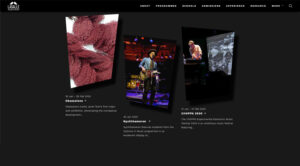What is Customer Lifetime Value?
Customer Lifetime Value (CLV) is a metric that quantifies the total estimated value a customer brings to a business over the duration of their relationship. It represents the monetary worth of a customer throughout their entire lifecycle, taking into account their purchasing patterns, average order value, frequency of purchases, and retention rate. CLV helps businesses understand the long-term financial impact of acquiring and retaining customers, allowing them to make informed decisions regarding marketing strategies, customer engagement initiatives, and resource allocation.
CLV is important.
By focusing on maximizing customer lifetime value, businesses can cultivate loyal relationships, enhance customer satisfaction, and drive sustainable growth.
For a brand, CLV is crucial for several reasons:
Strategic Decision Making: CLV provides valuable insights for strategic decision making. By understanding the long-term value of customers, businesses can allocate resources more effectively, optimize marketing efforts, and prioritize customer retention initiatives.
Profitability Assessment: CLV helps determine the profitability of acquiring and retaining customers. It allows businesses to identify high-value customers who generate substantial revenue and focus on nurturing those relationships for greater profitability.
Customer Segmentation: CLV aids in segmenting customers based on their value to the business. By categorizing customers into segments such as high-value, medium-value, and low-value, companies can tailor marketing strategies and allocate resources accordingly to maximize returns.
Marketing Efficiency: CLV helps optimize marketing spend by identifying the most cost-effective acquisition channels and customer segments. It enables businesses to invest their marketing resources where they are likely to generate the highest return on investment.
Customer Experience and Retention: CLV emphasizes the importance of customer retention. By understanding the lifetime value of customers, businesses can focus on building long-term relationships, providing excellent customer experiences, and fostering loyalty, resulting in higher retention rates and reduced churn.
Long-Term Growth: By maximizing CLV, businesses can drive sustainable growth. Loyal customers who have a high CLV not only generate recurring revenue but also become advocates, referring new customers and contributing to the expansion of the customer base.
CLV helps businesses make informed decisions, optimize marketing efforts, enhance customer experiences, and drive long-term profitability and growth. It is a valuable metric for understanding the financial impact of customer relationships and guiding strategic actions.
To ensure that a brand truly embraces the importance of Customer Lifetime Value (CLV), it needs to be imprinted in its DNA.
Firstly, it requires fostering a customer-centric culture throughout the organization, where every employee understands and prioritizes the long-term value of customers. This can be achieved through leadership support, training programs, and consistent reinforcement of the CLV mindset.
Secondly, integrating CLV as a key performance indicator and aligning it with overall business objectives helps embed its significance within the brand’s DNA. By incorporating CLV metrics into performance evaluations, goal setting, and incentive structures, employees are motivated to focus on nurturing long-term customer relationships.
Collaboration among different departments is crucial. By encouraging cross-functional collaboration, departments such as marketing, sales, customer support, and product development can work together to optimize CLV. Sharing customer insights, coordinating efforts, and jointly developing strategies that prioritize CLV ensure a unified approach towards maximizing customer value.
Data-driven decision making is essential for embracing CLV. Investing in robust customer data analytics and CRM systems allows the brand to capture, analyze, and utilize data effectively. By leveraging customer data and insights, informed decisions can be made regarding personalised marketing strategies, customer engagement initiatives, and resource allocation to drive CLV.
Continuous monitoring and measurement of CLV are vital. Regularly reviewing and analyzing CLV metrics, customer feedback, and behavioral data help identify areas for improvement and guide strategic actions. Experimentation and innovation are encouraged to find new ways to enhance CLV, test different customer engagement strategies, and refine approaches based on feedback and data insights.
Lastly, emphasizing the long-term relationship focus rather than short-term gains is important. Encouraging employees to prioritize customer satisfaction, loyalty, and retention over immediate transactions reinforces the value of CLV. Regular communication and reinforcement of the significance of CLV, sharing success stories, and showcasing its impact on business performance contribute to the brand embracing CLV as a fundamental core metric of success.
By implementing these practices, a brand can cultivate a customer-centric mindset, align business objectives with CLV, foster collaboration, leverage data insights, and prioritize long-term customer relationships. These actions ensure that CLV becomes an integral part of the brand’s DNA, driving sustainable growth and success.
Anchors up and full steam ahead!
To ensure a high Customer Lifetime Value (CLV), a brand can implement several strategies:
Customer-Centric Approach: Prioritize customer satisfaction and deliver exceptional experiences at every touchpoint. Understand customer needs, preferences, and pain points to tailor products, services, and interactions accordingly.
Personalisation and Customisation: Offer personalised recommendations, tailored communications, and customized experiences based on individual customer preferences. Leverage data and insights to create relevant and targeted marketing campaigns.
Customer Engagement, Communication and Marketing Automation: Foster ongoing engagement with customers through various channels, such as email marketing, social media, loyalty programs, and personalised notifications. Regularly communicate with customers to maintain a relationship and keep them informed about new products, promotions, and updates. And embracing modern marketing automation tools and strategies can help achieve this at scale.
Loyalty Programs: Implement loyalty programs that incentivise customers to stay engaged and make repeat purchases. Reward customers for their loyalty, offer exclusive perks, and provide incentives for referrals to encourage them to continue choosing your brand.
Proactive Customer Support: Provide excellent customer support that is responsive, efficient, and empathetic. Address customer concerns and issues promptly to ensure satisfaction and minimize the likelihood of churn.
Continuous Improvement: Regularly analyze customer feedback, behavior, and purchasing patterns to identify areas for improvement. Incorporate customer feedback into product development, service enhancements, and overall business strategies.
Relationship Building: Focus on building long-term relationships with customers rather than short-term transactions. Invest in nurturing customer relationships, understanding their evolving needs, and maintaining open lines of communication.
Upselling and Cross-selling: Identify opportunities to upsell or cross-sell relevant products or services to existing customers. Leverage customer data and insights to make targeted recommendations that align with their preferences and purchasing history.
Retention Strategies: Develop targeted retention strategies to prevent churn and encourage customer loyalty. Offer exclusive discounts, promotions, or personalised offers to retain existing customers and make them feel valued.
Data Analysis and Segmentation: Leverage customer data to segment your customer base and tailor marketing strategies accordingly. Identify high-value customer segments and allocate resources to nurture and retain them effectively.
TLDR (in case you skimmed through it all!)
A brand can cultivate long-lasting relationships with customers, enhance their lifetime value, and drive sustained growth and profitability. By doing this, not only would a brand drive fantastic business value in the long-term; they would be able to react and adapt more easily to changing forces in the market, identify customer needs more easily, serve those needs better, and enjoy the benefits of happy and loyal customers.
Here’s a related post (let’s say Part 2), which talks about how we can use personalisation and marketing automation to achieve a high Customer Lifetime Value.
At Focalworks, we help our client-partners present the best version of their brands to their customers through awesome commerce experiences, gain actionable insights with analytics dashboards, and create high brand engagement leveraging personalisation and marketing automation.
If you’d like to learn more about how we can help your brand achieve and maintain great traction with your customers, schedule a meeting with us!


